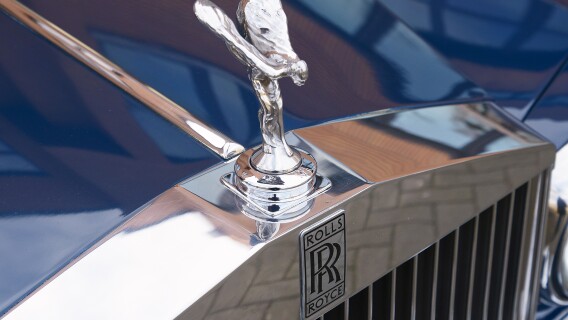In December 2022, I noted that Rolls Royce (RYCEY) stock had been hard hit by the impact of Covid on air travel and thus the miles flown by Rolls-powered commercial jets, which is how it derives much of its revenue.
The company had also acquired quite a bit of debt.
However, I still recommended the stock which was then trading at just $1 a share.
The tide seemed to be turning and downside risk was offset by how important the company was to the U.K. government because of its strategically important aerospace and defense business.
I did highlight that Rolls Royce was an aggressive idea.
[text_ad]
But incoming CEO Tufan Erginbilgic could be a game changer and longer-term investors might be rewarded since it seems to me that Rolls-Royce remains well-positioned to handle potential headwinds facing the sector.
The stock now trades at $2.50 – a 150% gain in less than 10 months.
RYCEY is enjoying the benefit of increased airline travel, which has led to higher demand for new aircraft. Further, leadership changes have occurred this year.
Rolls-Royce reported half-year earnings results which reflected an increase in revenue of 31% compared to the prior year. Operating profits surged fivefold thanks to higher revenue from its civil aviation segment, strong cash flow, and a faster-than-expected product delivery timeline.
Rolls-Royce operates as an industrial technology company in the United Kingdom and internationally. The company operates in four segments: Civil Aerospace, Power Systems, Defense, and New Markets. The Civil Aerospace segment develops, manufactures, and sells aero engines for large commercial aircraft, regional jet, and business aviation markets, as well as provides aftermarket services.
The Defense segment offers aero engines for military transport, naval engines and submarine nuclear power plants, and the New Markets segment develops small modular reactors.
Next up for Rolls Royce is modular nuclear power as the U.K. seeks to improve energy security and reduce its reliance on Russian oil.
Its small modular reactors (SMRs) could supply a fifth of the U.K.’s total electricity capacity to homes across England and Wales by the end of the decade. The reactors use existing nuclear technology on a smaller scale than traditional power plants. Each can generate about 470MW of power and last at least 60 years.
The push for approvals comes as deals are signed elsewhere. GE Hitachi Nuclear Energy signed a deal last year with Canada’s Ontario Power Generation that could be online as early as 2028. Deals for GE to build 10 more in Poland followed weeks later.
Rolls Royce’s design aims for a price of less than a tenth of the cost of the most modern large power station while providing about 70% of the power. This is the fastest way to get new nuclear on the grid. With each SMR providing one million homes with low-carbon electricity.
I recommend taking some profits off the table but if robust cash flow allows the company to reduce its debt burden, Rolls Royce could be a great example of a legendary company that made the move from luxury autos to superior aircraft engines to nuclear and hydrogen power.
If you’re interested in learning more about investing trends in nuclear power, you may like the recent article “Nuclear Stocks are Making a Comeback. Here’s My Favorite Way to Play It.”
[author_ad]
